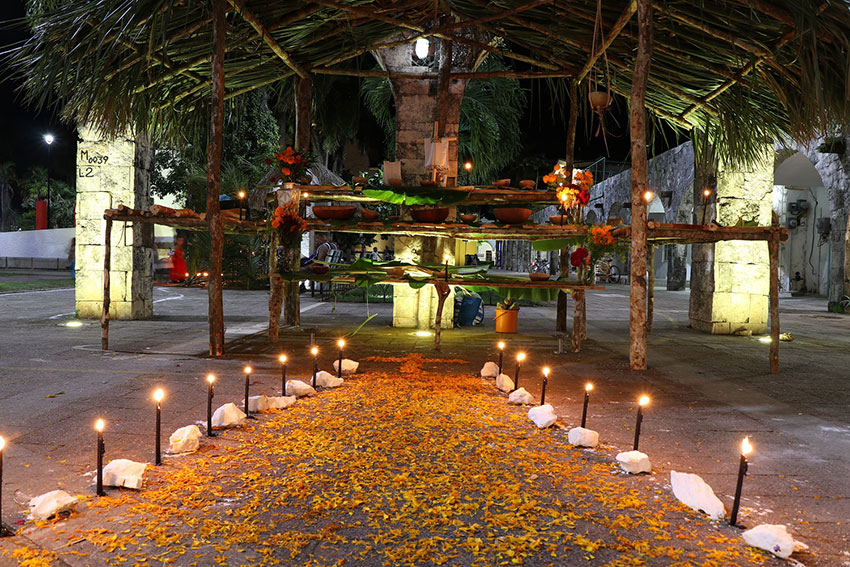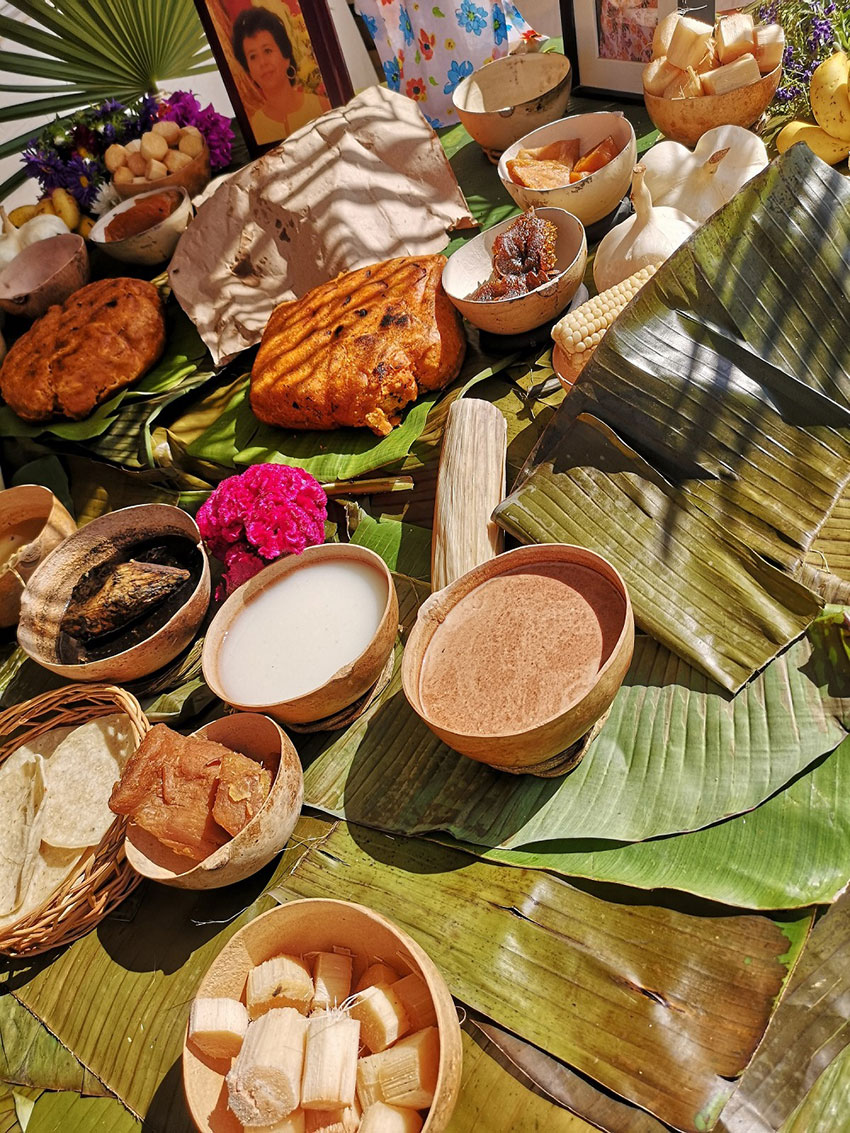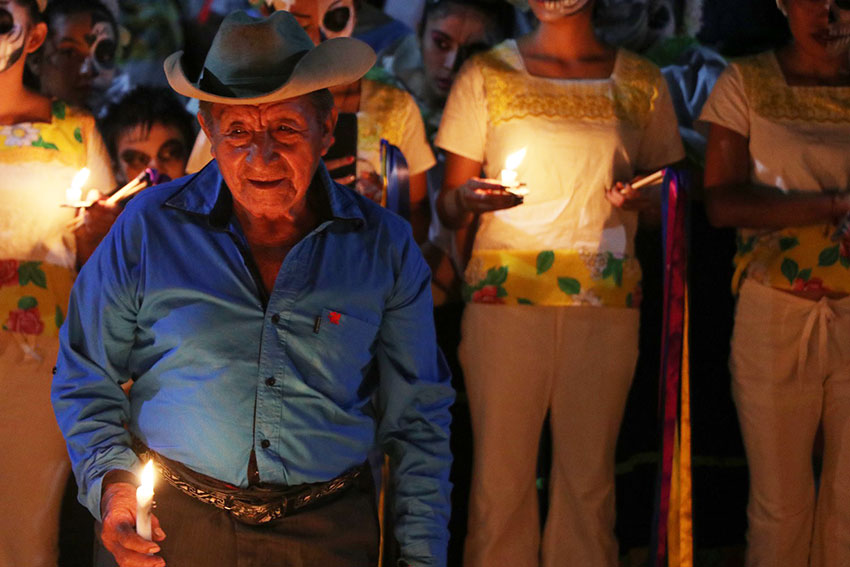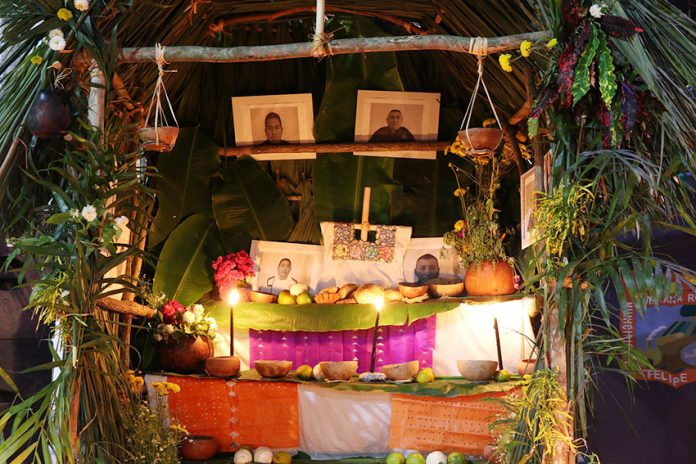After days of preparing food, building altars, and cleaning their homes, Maya families across the Yucatán Peninsula are ready to welcome the first of their special guests — the souls of deceased loved ones.
Hanal Pixán, meaning “Food for the Souls,” is the region’s annual Day of the Dead tradition, which starts on October 31. It’s when Maya families welcome the souls of lost children. On November 1, they receive the souls of adults, and on November 2 there is a mass for all souls.
Paulino Ek Martín, 29, is a Maya language teacher originally from Tipikal, Yucatán, who lives in Señor, Quintana Roo. He said that to celebrate Hanal Pixán, families cook a traditional dish, chachac waj, for their visiting loved ones.
The dish resembles a large tamal and consists of masa (corn dough), chicken and k’ool, a bright-red salsa made with achiote paste.
The traditional method of cooking chachac waj is to dig a hole in the ground, place stones and wood at the bottom, light a fire and set the tamales in the earth, where they are covered with leaves and left to cook for about an hour. This practice of cooking by burying food is called pib.

Ek explained that the act of digging a hole for chachac waj signifies the burial of the deceased, while the tradition of taking the food from the ground represents the annual return of the souls to visit the living. Later the tamales are placed on the altars, ready for the visiting souls.
Altars are an essential part of Day of the Dead traditions across Mexico, and the Yucatán is no different, although the Maya have their own customs.
“[For the altar] we use a flat, rectangular table that represents the plane of the earth,” Oscar Mis, a 28-year-old elementary school teacher from Felipe Carrillo Puerto, Quintana Roo, said. “Each of the table’s legs represent four gods supporting the plane.”
Traditionally, Maya build altars from sticks, covering them with banana leaves, on top of which they place the Maya cross, which is dressed in a white shroud.
“The cross does not represent Catholicism or Christianity,” said Mis. “[At the time of the Conquest], Maya culture was considered part of four cardinal points, and this is represented by our cross, which signifies our sacred tree, the ceiba or yaxché [in Maya].”
Other offerings, such as wildflowers, handmade tortillas, pozol — a drink made of fermented corn dough — and fruit like mandarins and bananas are also placed upon the altars.

In the days leading up to Hanal Pixán, families will clean loved ones’ graves, removing weeds and painting the tombs. They also spend time making their homes impeccable so that the souls feel comfortable.
Families remove mirrors and items made of glass or nails, and they hide animals by putting them in their pens or tying them up.
“According to our customs, the animals are the ones who can see the souls; we can’t see them. The animals see them, and the souls get scared. It is an obstacle that can prevent them from entering the home,” explained Mis.
Another common Maya belief, Ek said, is that the souls need to be guided home.
“When the souls come, they have a guide called ‘death’ or ‘the controller of death.’ This guide takes the souls to their respective homes,” he explained. “Another way is to put candles along the road so that the light guides the soul.
“I believe that the guide, who is also a soul, will leave them on the street, maybe a block or two from the house. Then the soul, realizing that it is their home, follows the trail of candles.”

When the souls of loved ones arrive home, it is a time of celebration, a time to honor the deceased, remember them, and celebrate their lives, he said.
“When a relative is visiting me, I do not see them; that is obvious. But you feel their presence, so much that sometimes you start to cry remembering them — or so much that you start to laugh. This is us remembering [our loved ones], and it is part of our happiness because now we are living with them again,” Ek says.
While Hanal Pixán is a well celebrated tradition, both men lamented that some practices are at risk of being lost by younger generations. Mis said the custom of guiding the souls with candles is common throughout the Yucatán, but “it is rare to find a 25-year-old or 20-year-old who knows this tradition and who talks about it.”
Mis said it is common for people to incorporate Day of the Dead customs that are Mexican but not traditionally Maya, such as the Catrina, sugar skulls, and face painting. While he is not against mixing cultural traditions, he said that young people must not forget their roots.
“There are things we are losing, both language and traditions,” Mis says. “We have to foster these traditions in young people. We must get them to pay attention to these traditions, value them, and adopt them as part of their life. We have to pass this on from generation to generation so that these customs that we have practiced for millennia are not lost.”
Mexico News Daily
